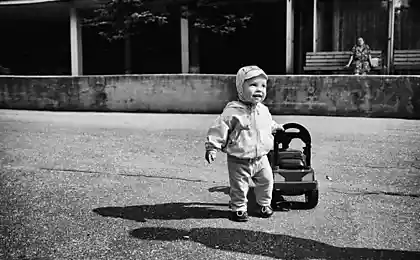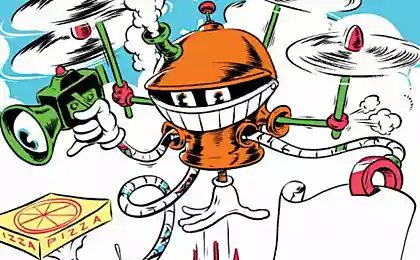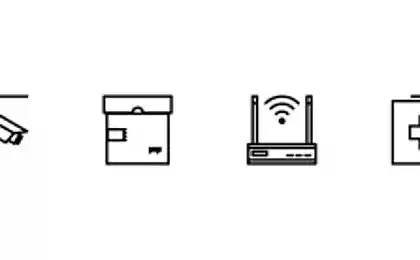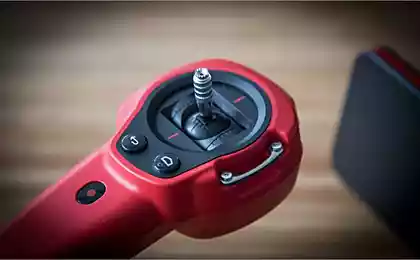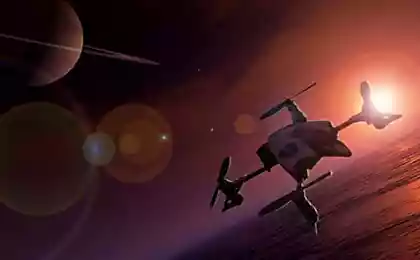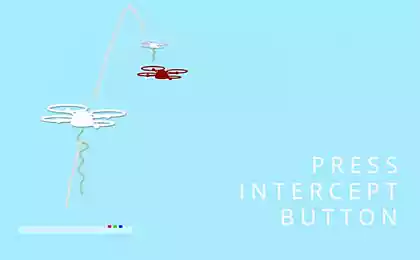Hello.
I am not an avid user Habra. I almost did not comment. I read it every day, but do not feel comfortable in the IT-sphere to express their opinion. So I do not have karma and do not try to earn it.
But I have a dream and a hobby.
I - a former pilot. The former - because of a failed parachute jump. Historically.
Nothing happened, I retrained and became a good economist, but the dream remained just as well as the realization that the sky could be severely punished even for minor offenses. Over time, I had the idea to make an app for pilots, the main purpose and idea of which - reducing the risk of accidents and assist the pilot in a situation of extreme time pressure. Many developments may be useful to those involved in software for flying drones.
Preamble h4> Flight Safety is made up of several components.
1. Knowledge of the theory of flight and flight safety. Flight safety depends largely on the ground training and understanding of the "physics of the process," ie. E. The minimum base level of theory. To perform a simple flight is not necessary to receive special education. But learn the basic principles governing documents, the experience of other pilots have to compulsorily.
In my dream I would like to implement:
1. Collection of RLE (flight manual) for different types of aircraft (BC);
2. Theoretical basis of the flight by sections - aerodynamics, design theory Sun, meteorology, aviation law, and so on. N .;
3. The system of online tests for self-assessment of theoretical training.
This is to ensure that any pilot or UAV operator can independently study the necessary minimum of theory and self-control themselves.
I've tried various options of distance learning and all that could give new knowledge - courses, online seminars, webinars, forums, articles, etc. In the aviation environment, remote and independent learning - one of the components of safety. If the pilot does not update constantly their knowledge, many things are forgotten, replaced by "experience" as his own and colleagues. This is a dangerous phenomenon. Therefore, in large AK, conduct different tests, exams and classes to maintain an appropriate level of knowledge and skills.
In this issue of small aircraft is maintained relatively weak because no centralized control system of skills and information dissemination. This gap can be compensated using the proposed implementation me.
There are quite successful turnkey solutions that can be optimized to solve the problem of training the pilots of small aircraft.
To drone operators: 1. Everything that flies must comply laws. Our law does not exactly too shares the responsibility for the use of airspace. So even launch control toys without proper legal training can turn a very serious trouble. Explore Government Decree of 11 March 2010 N 138 "On approval of the Federal Rules of use of airspace of the Russian Federation" (with amendments).
2. The airspace is divided into "flight zone" with different levels of permissions, responsibilities and reporting lines. You may not know that you are running the drone in the restricted area. But this does not relieve you of your responsibility, and the detention of the district on the complaint of disgruntled neighbors can result in forfeiture of the aircraft and the imposing fines. In my memory, the maximum fine for a short flight, handed down by the court, was about 200 thousand rubles.
The boundaries of the zones you can see here .
3. Very often, the drones are used for flight rotor or screws. And just as often, these drones crash early in the flight inexperienced operators. To avoid this, read about the principles of flight of large helicopters.
Here you can find a variety of documents on various helicopters and manuals.
Pay special attention to various "modes of operation" of the helicopters in the vertical and horizontal velocity of the helicopter, depending on the altitude. Relate limitations of real helicopter with the size of your drone, and get a rough idea about the restrictions for your drones. In developing algorithms consider these limitations and the probability to break the drone of the planet will be significantly reduced.
Habré was just article about creating a simulator for copter , which describes an interesting (though, IMHO, is not quite right ) approach to training before the actual departure. This approach, together with the theory allow enough qualitative approach to the successful piloting skills.
Flight Planning h5> The second major step in aviation safety - preparation for departure. Basic error - short flight takes less time to prepare. This is wrong! A single flight on the box (around the airfield lasting about 10 minutes) requires a time almost the same training as the hours of flight. However, psychologically, really want to quit and just fly, it's "five minutes" ... During the night parachute jump can be too lazy to recharge the flashlight, because it burns, albeit dimly ... And it's better not to know for yourself what it ends and then how much you need to spend months to recover. Believe me - the time saved in preparation for the flight of hundreds of thousands of times less time correcting errors. And it is in that case, if the error can be corrected.
What would you like in my dream:
1. The automated system of collection and analysis of primary information needed to flight stage.
2. The exchange of data between the parties within the framework of the flight time, the conditions of the route of flight.
3. Ability to alert stakeholders (colleagues, supervisors, etc.) occurring on the deviations in the planned and actual data to date.
The pilot or operator of the drone it will give the opportunity to reduce the time and effort to prepare for the flight. The use of software algorithms to assess the flight information in advance will help warn pilots of possible adverse conditions during the flight, as well as to advise on possible solutions. This will improve safety.
To drone operators: 1. Flight Planning in case of piloting the drone - is a very important element. Since, in most cases, the drone is not possible to make their own decisions, based on an independent evaluation of the data, the algorithms in the controller's onboard invest most typical patterns of behavior for a particular case.
A striking example is the algorithm return to the departure point of the loss of communication with the operator. It is also not very great diversity in the methods used - return in a straight line repetition of the route, and perhaps all. However, this is a very small fraction of all possible options. Many of them have already been tested in a "large" aircraft and can be used in software development for flying drones.
Here's a look article about how quickly you can ruin a great copter , and as you can see that in modern and expensive copter developers are not actively using the experience of the "real aviation." It is even seen as an example of the interface - in aviation has long been used practically uniform variant output current information.
1.1. [Full-time flight. Communication is lost. Return "straight"] Returns a straight is possible only if the route following conditions are met - safe height all along the route, there are no dangerous weather phenomena throughout the route, no flight zone with restrictions or prohibitions, no air traffic ( do not forget that the loss of communication drone operator returns alone and is unable to notify the other parties of the possible flight dangerously close, and the drone does not have the ability to avoid a collision or to notify about your itinerary).
1.2. [Full-time flight. Communication is lost. Back on the route covered] In this case, must be met, including the scope and speed of movement on the reverse route, the operator can have an idea about the approximate position of the drone to be able to notify other members of flights.
1.3. [Full-time or freelance flight.] In the "Big Air" route is calculated in a complex way - for many motor BC route is chosen in such a way that at each point of the route the sun is at a certain distance to the alternate airport in case you need the commission of an emergency landing. All of this is calculated on the stage of preparation of the flight, and in the event of an emergency - the crew does not waste time searching for information, and uses the already existing data on the workpiece with the most convenient way of planting, methods of approach, communication, environment and so on. D.
In the case of the single-engine Amphibious situation is more complicated, but also worked out in advance - using preliminary selection of possible sites for planting and pre-calculated parameters for planning (optimal speed, distance traveled).
Clearly, all this is to observe (especially in Russia) is unrealistic, especially in the northern and Siberian regions, but such training is needed! In the year that killed more than a sufficient number of pilots who neglect the preparation of emergency action on the selection of sites and wrong actions because of this, to have 100% confidence in the exceptional importance of the planning phase of the flight. When the sun breaks up on takeoff, in most cases it is the result of incorrect actions due to poor preparation for departure (incorrectly selected area or try to deploy network and single engine aircraft disregard requirements calculation speeds, non-compliance procedure of preparation for departure and t. N.).
1.4. Plan a route. Your drone - it is your property, so if it will be covered in the settlement and damage - it will reimburse you. On the other hand - if the drone collapsing away from populated areas or in the impenetrable forests - you will not find it, even if the drone will make quite a safe landing.
Therefore, route planning - a very important part of the preparation for the flight. And you can optimize and automate.
At the moment, there are opportunities to make flight planning automatic or semi-automatic, with minimal involvement of the pilot or navigator. The algorithm is very elaborated in the "Big Air" and at the moment it is possible to build the best route, even taking into account the personal preferences of the pilot or operator.
Meteopodgotovka h5> Everyone knows that meteopodgotovka need for airplanes or helicopters. The recent crash of the Mi-8 at an air show, according to preliminary data, it could be triggered by weather conditions - little wind in this part of the airfield. Last year a friend's car had fallen on the rise due to the associated wind gust (shift). I got myself in a situation where the weather on departure was within the normal range, and landing very anxious to get out of the plane and to pretend that it does not happen to me.
Now it is possible to predict the weather, not only near the weather station, but all along the route. Using these services will help to impose on the flight plan (route) data for the weather in automated form, thereby increasing the reliability of preparation for departure. In his dream is exactly what I want to do.
To drone operators: If the drone is flying is not in the room, the atmosphere acts on it. Trite? However, many people do not realize that at the height of 50 meters above the ground the weather really is not as near the surface. Or that it may change in a few minutes after takeoff. With almost 100% accuracy can predict the weather for the next 3 hours and for this you need to use special services with weather information (TAF / METAR). The argument that you fly away from the airfield, irrelevant, t. To. Now have the opportunity to receive a fairly accurate forecast for virtually anywhere on the planet.
safe altitude and distance h5> This is also a very important element of training. In the "large" aircraft deemed safe long distance and height on the horizon. For example, restrictions on the height of 100 meters and 1000 meters in the horizontal means that in case of lack of visibility, as well as in-flight instrument, the distance to the ground or the object must not be less than 100 meters and a height of 1000 meters for distance. These constraints provide a greater likelihood to fly safely, without risk of collision. Here's статья on this topic .
In small aircraft often lack the resources or permission to fly on instruments, without sight of land (even if the aircraft is equipped with the appropriate systems and devices, the tolerance of the pilot can not afford to fly in SMU). However, sometimes the weather changes very quickly, and pilots need information about safe altitude at flight. From my experience - I have not seen in aero clubs or in line units of pilots who have worked through a safe altitude for each flight. Although we have drawn on their studies cribs with a safe altitude and other navigational information. But most of the pilots consider it unnecessary, because 99% of the planned flight altitude with a huge stock exceeds the minimum safe altitude for the area.
Areas in which the aircraft will be in the vicinity of the earth - the aerodrome of departure and landing. For them printed maps Jeppesen, with all the necessary information. Well, in the case of an unscheduled landing at an unfamiliar airfield accepted that "no luck» ...
In my dream I would like to make a bump map for the route and possible alternate aerodromes and sites. To pilot a difficult situation had one chance more favorable for planting. In my flying club An-2 punched Mostly, they have not dropped the chance - with the hills brought the engine and why it is only two wings. The benefit of the pilots survived.
To drone operators: For the drone such safe distance, of course, unnecessary, but the restrictions must be for him - in this case, with no solo flight drone crashes into a house or a power line and a line will always be able to fly around the obstacle. < br />
If you want to make - take the paper and draw a polygon in which you intend to use your drones. And next count distances, which are required for your drone to a complete stop on the horizon for the operating speed. Add to the "wall test site" is the distance multiplied by 1, 5. Do the same height. I think you'll have a very small space for a safe flight. Include these restrictions in "flight plan" of your drone, and I am sure that you will avoid the collision.
I am sure that will be the opponents, who will talk about the "unknown zones", where distance is unknown or the location of obstacles. There are two answers:
3.1. This is an artificial situation on the real terrain in 10 of the 10 cases known where you will fly there and what a relief. A margin of safety altitude is chosen so as to avoid a collision with a free-standing obstacles. In zones and landing sites "large aircraft" altitude and a safe path for a long time in advance, and are counted and listed on a special card. In all other cases - there are pre-prepared slopes, with a system of separation, which eliminates the collision with obstacles.
3.2. This is possible under specific conditions, while in the flight plan are made no safety distances and safe speed at which a collision with an object does not cause the destruction of the drone.
Strict adherence to instructions or guidelines h5> This item is obviously important. Not to be unfounded - advise to visit and read Russian-language website flight instructor one of the airlines of the Russian Federation. Articles on it is very easy to read, there are many beautiful pictures and a great number of real experience of the current pilot and instructor who talks on the basis of practical cases, the importance of deliberate use of instructions and manuals.
Like this, I would like to realize their dreams - the possibility of subjective and objective monitoring and evaluation of the flight. E. Maintain records flight parameters throughout its duration, with the possibility of post-flight evaluation of these data on the "reference parameters", as well as the ability to assess their other contributors to the specialized service. This will give the opportunity to carry out "work on the bugs', even if you do not have to personally demonstrate piloting instructor pilot (operator-instructor).
For operators of drones such service will also be useful, ie. A. Will provide comments on the already experienced operators and will spend more quality control drone.
Ability to "fly ahead of the aircraft."
Ie
